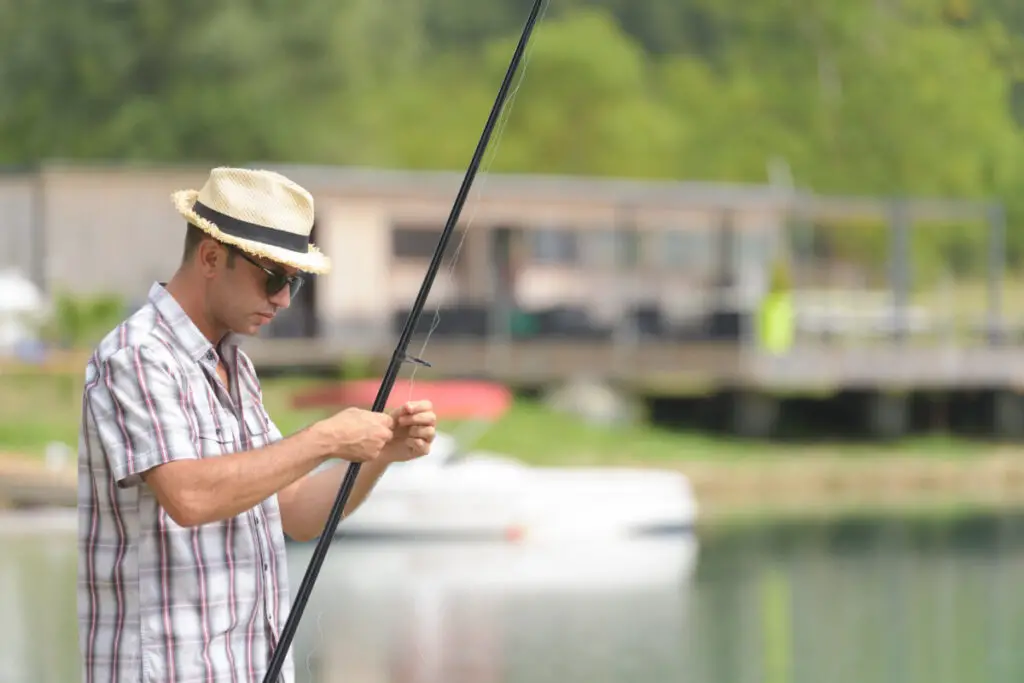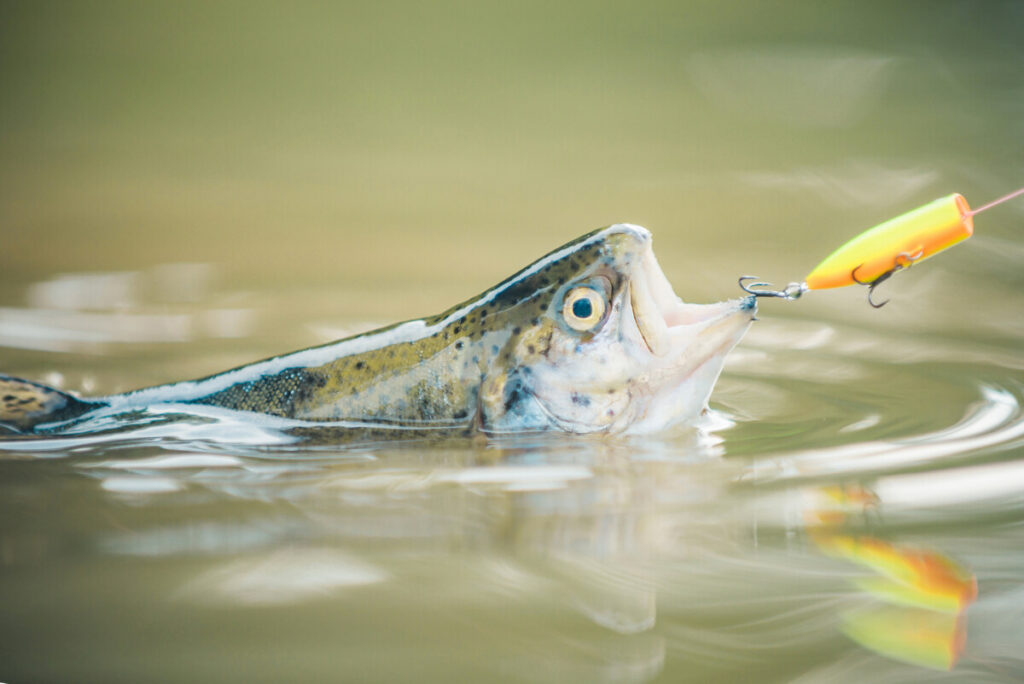Fishing started as a necessity and has now become one of man’s favorite hobbies. If you are looking for ways to improve your fishing game, you may have considered trying scent attractants, but do they really work? Here’s your answer.
Using a fish scent attractant will work if it is done so correctly. Scent attraction is not always a guaranteed method of success, but it has proven to be more effective on tamer fish, such as bass, carp, and crappie. Hunter fish, like pike and muskie, do not respond to scent attractants very well.
All of this is not to say that scent attraction is a solution for fools, because it’s not. The problem is that a lot of people don’t use scents very well, and you certainly don’t want to repeat that mistake. So, to help you along, here is some info and a few tips on using scent lures!
How Does Scent Attraction Work?
First, let’s discuss how and why scent attraction works. Most fish have two pores (essentially nostrils) below their eyes and above their mouth. Water flows in through one and out through the other, bringing with it chemical scents that float around in the water. These are also often referred to as chemical cues.
When a fishing scent attractant is used, the fish will be able to detect that scent and follow it. These are positive scents that generally signal to the fish that food is nearby. In some cases, however, a scent is used as more of a disguise. Sound crazy? Well, it’s true and it works!
According to Bass Pro Shops, there are a lot of scents that we bring with us when we go fishing. Some of these could potentially be gasoline, cleaner, human food, and just our natural human scent. Fish can determine whether a certain scent leads to food or danger, and if any of these scents reach the water, you can count on the fish avoiding you like the plague.
Sometimes a fish attractant won’t “attract” the fish, but rather it serves to mask any scents you may not want the fish to pick up. If the attractant is used correctly, it might even be able to serve both purposes: masking and attracting. It all depends on how you use your attractants, what scent you pick, and what fish you’re fishing for.

Popular/Effective Scents
The scent you want to pick should be decided carefully. It matters less what kind of fish you’re fishing for and more what purpose you have in mind. For example, if you’re trying to mask your scent (and other surrounding negative scents) you’ll want to use a few specific spices to get the job done.
Anise and garlic are two excellent choices if you’re wanting to mask your scent. Salt can work as well, though it often acts more as a lure than a disguise. One fisherman recommended simply storing scent attractant in a container and dipping a worm into the solution whenever necessary. This made it easier to keep for future fishing trips.
One mistake that is commonly made stems from the misconception that one coat will do. It is often necessary to coat your bait in a scent multiple times for it to be effective. The scents that fish smell travel through the water that the fish swim in. The water continually flows, so you’re going to want to season things with a scent multiple times for it to keep working.
Apart from using anise, salt, and garlic, there are also a few scent lure products that come highly recommended by several anglers out there. Here are a few you should be safe with:
- Dip N’ Glow Soft Garlic Bait
- Berkeley Power Bait
- Baitmate Classic Scent
- Kodiak Fish Attractant
- Megastrike Original
Many of these products employ the use of garlic and other natural fish attractants. While many, like the Baitmate Classic, can be bought for $5 or so, there are a few others like the Megastrike that cost quite a bit more money and are used a lot by professionals. No matter what you choose to use, most of these are highly rated and quite effective and will hopefully help you to greatly enhance your fishing experience.
Who Prefers What?
Now we should talk about the matter of the fish. Do specific fish prefer specific scents? What baits can be used for those specific fish? Let’s discuss the answers to some of these questions.

Catfish, trout, and salmon are all species that greatly rely on their sense of smell to find food. This makes them particularly susceptible to scent luring, but only if you are employing the use of the right scents. They are particularly attracted to things that exude amino acids such as raw chicken liver, garlic, and nightcrawlers.
Other species such as crappie, walleye, carp, panfish, and bass are a little less simple to understand. There is no knowing exactly what these fish are attracted to, but there are plenty of baits out there that keep bass especially in mind. The trick here is to experiment with different brands of bait (and natural bait), fishing spots, and fish species. Only time will tell what works the best!
One final thing to keep in mind is that scent fishing works better for certain groups of fish as well. Tamer fish like bass, crappie, and panfish are much better suited to the science of scent attraction. They rely on their sense of smell above all else when they’re trying to find food and that makes them ideal targets for this kind of thing.
There are anglers out there that might favor a more aggressive, tough kind of fish and this is where scent attraction will most likely fail you. Pike and muskie are both popular for fishing. The thing about these two species is that they’re hunters and not gatherers. They rely very little on their sense of smell when trying to find food, so if this is your fish of choice, using a scent attractant is a waste of time.

